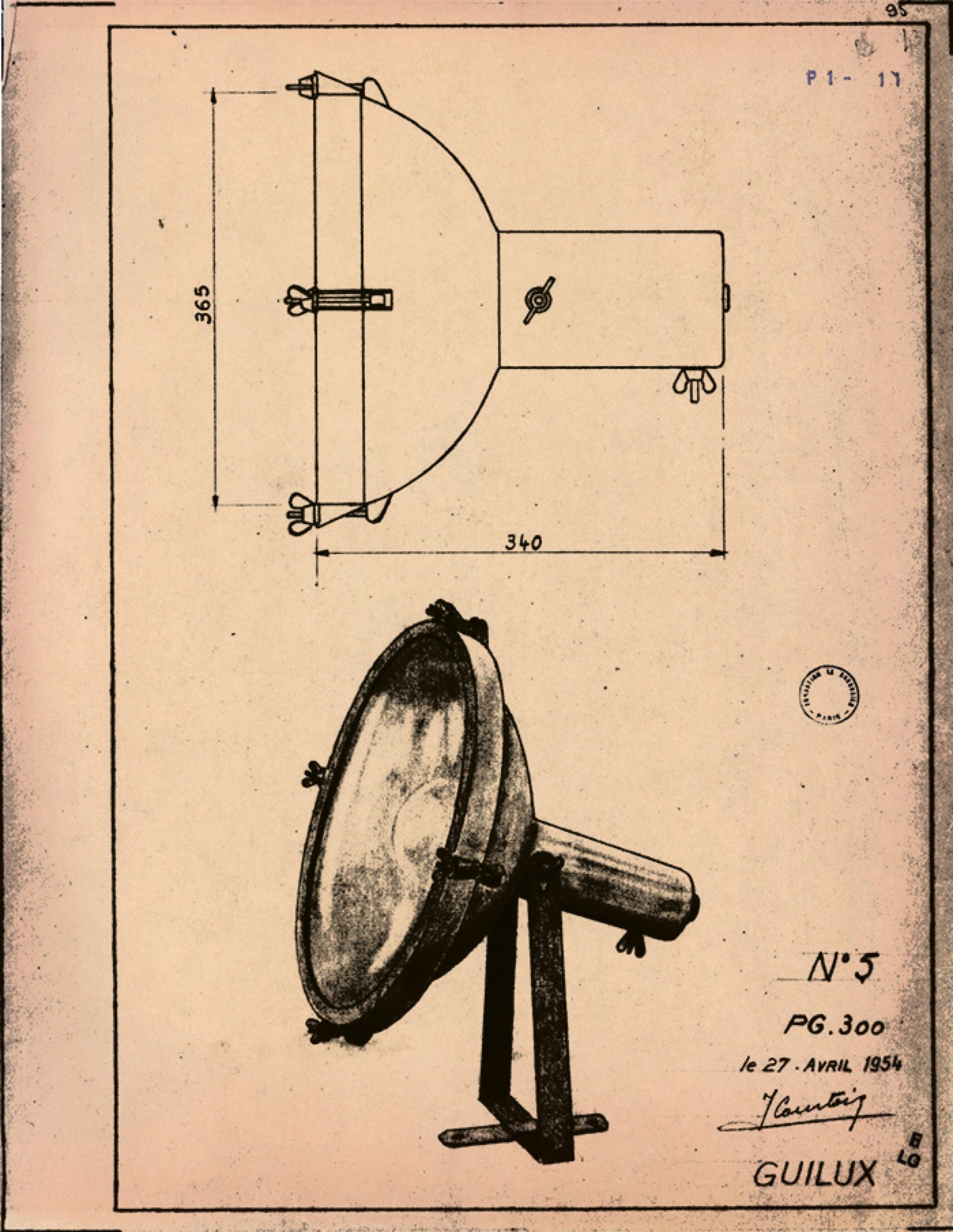
The Projecteur 165 is a compact version of the Projecteur 365 designed by Le Corbusier for the High Court of Chandigarh. Its small size allows it to easily integrate any room of your home. It is available in three versions: clamp lamp, pendant and wall lamp.
The projector's body is made of painted aluminum (three colours: night blue, white sand and moka). The curved diffuser glass is sandblasted inside. Locking nuts are chromed black, like the rest of the screws and bolts. The base and hook are matching the body colour.
The new city of Chandigarh was built in the north of India just after independence in 1947. It is famous worldwide for its innovative urban plan, by Le Corbusier from a previous plan of Albert Mayer, and for its main buildings designed by Pierre Jeanneret, Maxwell Fry and Drew Jande. It was to illuminate the building of the High Court of Justice that Le Corbusier designed Projecteur 365.
Light source 1 x E27
Ø17 x D16 x H22 cm – Max clip opening 3cm.
White sand
Night blue
Ø17 x H16 cm – ceiling cap Ø11 cm – Cord max 2m.
White sand
Night blue
Moka
Ø17 x P16 cm
White sand
Night blue
Moka

Le Corbusier

Charles-Édouard Jeanneret-Gris, known as Le Corbusier, is a Swiss architect, urban planner, decorator, painter, sculptor, naturalized French author, born October 6, 1887 in La Chaux-de-Fonds in Switzerland and died August 27, 1965 in Roquebrune -Cap-Martin in France.
He is one of the main representatives of the modern movement with, among others, Ludwig Mies van der Rohe, Walter Gropius, Alvar Aalto, Theo van Doesburg and Robert Mallet-Stevens.
Le Corbusier also worked in town planning and design. He is known for being the inventor of the “housing unit”, a concept on which he began to work in the 1920s, an expression of theoretical reflection on collective housing.
Le Corbusier's architectural work comprising seventeen sites (including ten in France, the others being spread over three continents) was listed as a UNESCO World Heritage Site on July 17, 2016.
Le Corbusier's work and thought were particularly influential on post-war generations of architects and widely disseminated, before entering, with the period of postmodernism, a phase of significant and regular contestation.
He is the father of modern architecture, being the first to replace external load-bearing walls with reinforced concrete pillars placed inside buildings.
When Le Corbusier's death was announced, Alvar Aalto admitted that he had never appreciated the dogmatic prophet or the spokesman for modern architecture. Once the first surprise of the introductions, there was only a verbose flow. But the meticulous achievements of the architect builder deserved, according to the Finnish master, a completely different consideration, by their variety and their originality, their functionality and their adaptation to the constraint, their generous spirituality or their geometric destitution, their surprising evolution with the time…
Price Guarantee
Offering design at the right price is an integral part of our work. If you find the same item at a lower price at another retailer, delivery included, we will not only match it, but even offer you a better price.
How to take advantage of it?
We compare our prices every day with all authorized retailers in Europe. If nevertheless you find cheaper, contact us for a counter-proposal.
We must be able to verify that the item is authentic, new, perfectly identical (size, materials, color, etc.)
and that it is not part of a campaign or temporary destocking.
The valid basis is, for example, a current quote or a direct link to another retailer's website where the lower price is indicated. An email image is invalid, the original email must be forwarded.
The offer does not apply to orders already placed and cannot be combined with any of our other offers or promotions.
Ce site web utilise les cookies techniques pour fonctionner.
Vous pouvez les refuser, mais perdrez alors la possibilité d'acheter.
OK
Refuser